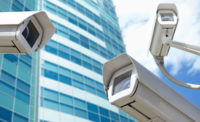We’ve gotten pretty good at collecting all sorts of data from cameras and other sensors – but in the end, it is what we do with the information that counts. Surveillance technologies provide the capability to capture the minutest details, but the real value in collecting information is in its analysis. While technology allows us to observe behaviors that predict criminal intent and can interdict before events occur, often this data is subverted by security professionals and law enforcement misinterpretation based on spurious factors.
Recently the Department of Justice (DOJ) announced that it would be releasing new regulations concerning the use of “profiling” by law enforcement officials and agencies. Based on media interpretation and a misunderstanding of this announcement, one element of the announcement grabbed the headlines – that the Department of Homeland Security’s Transportation Security Administration (TSA) and the U.S. Customs and Border Protection (CBP) would be exempted from the new regulations on the use of profiling. This media interpretation immediately elicited the expected outcry from civil libertarians concerned with the misuse of profiling as a surveillance and policing technique.
Unfortunately the interpretation by the media of the new DOJ regulations has some important flaws. First, it was reported that certain agencies that deal with counter-terrorism would be exempt from the new regulations. These reports especially highlighted an exemption for agencies that conduct security operations in the areas of airports and border crossings. Of course this has caused alarm among civil rights and religious groups that believe they are already profiled by federal agencies in those locations. However, the truth is that profiling has not been in use by most agencies since the previous DOJ guidelines were put out in 2003.
Profiling based on race, culture, and religious affiliation has been shown to have significant flaws in multiple studies and is not used by most law enforcement agencies. This type of profiling in reality is the stuff of shows and movies. Real and effective security is accomplished by identifying suspicious behavior, not individuals singled out by profiling.
Secondly, the misinterpretation of the DOJ regulations adds to the misunderstanding of the techniques which are utilized by DHS. At TSA, profiling is a catch-all and misused term. The Department of Homeland Security and its components do not profile. In fact, within DHS there is constant review, education and quality control measures in place to ensure that its employees do not “profile.” Every policy, program and person within DHS is subject to scrutiny by its Office of Civil Liberties and Rights, legal counsels and the DHS Inspector General. When allegations of profiling have been leveled against various elements of the DHS in the past, after extensive investigation these allegations were not substantiated. DHS has enhanced and continues to modify their programs and has training, education and stringent quality control measures to ensure that their personnel do not profile anyone based on race, religion, gender or sexual orientation.
The proposed exemption for airports is a hot button for groups that have raised questions about TSA’s Behavior Detection Program (BDO). The BDO program trains TSA officers to look for passengers showing signs of stress, fear or deception as a way to detect terrorists. The BDO programs looks for behaviors, not individuals who fit a profile. Sound methodology and rigorous training, education and oversight have been built into the BDO program to preclude profiling.
While surveillance technologies are invaluable to security eff orts, no technology or system can take the place of security professionals to fully use and interpret information. It is for this reason that the BDO program is so important.
Improper terminology by the media antagonizes the general public and makes the job of security organizations and law enforcement agencies more difficult. Classifying law enforcement surveillance and observation techniques as “profiling” is misleading and causes tension between the public and security and law enforcement. Most law enforcement and security agencies utilize techniques to assess behavior because classifying individuals or profiling them leads to mistakes. Identifying criminal behaviors, understanding patterns and anomalies based on observation or utilizing proper surveillance, and classifying risk based on behaviors are much more effective ways of mitigating threats.
Security is a fine balancing act to respect the rights of individuals and simultaneously protect the public. Let’s not mislabel surveillance and observation programs as something they are not. Let’s allow security professionals to do their work and protect against terrorism.










